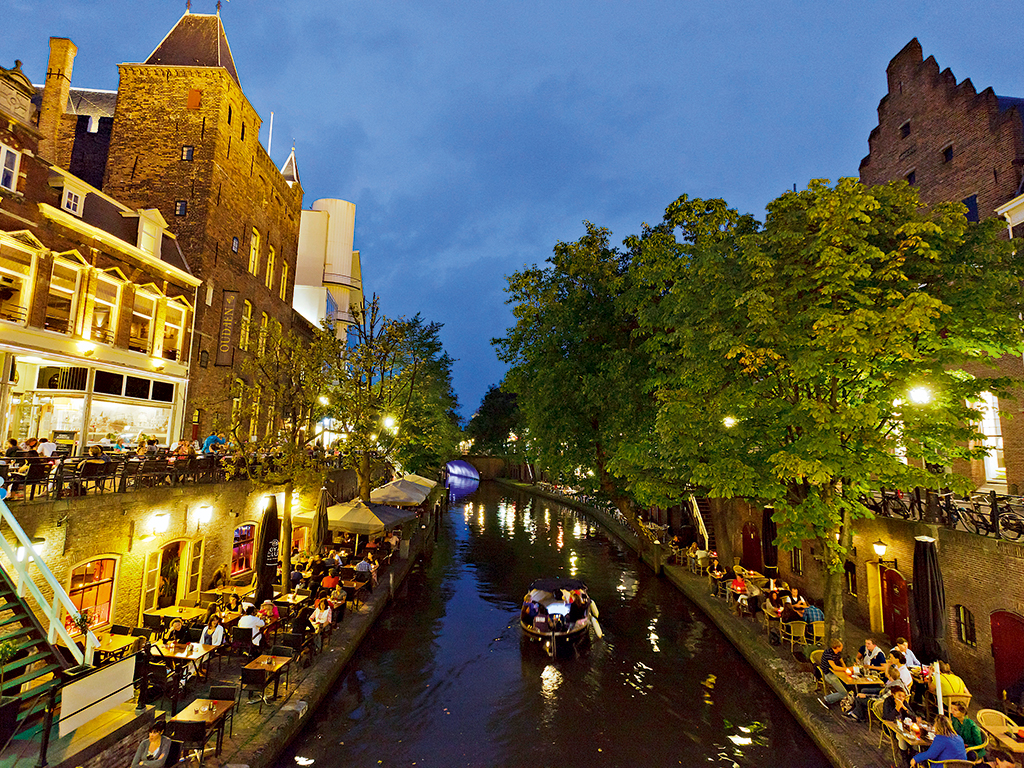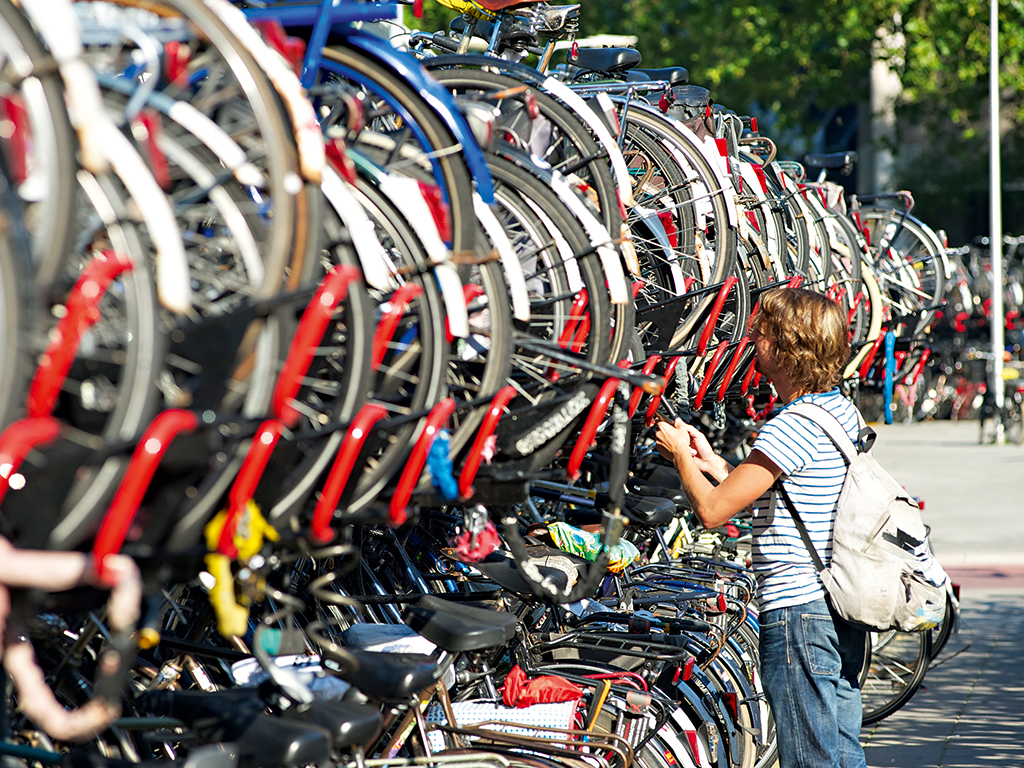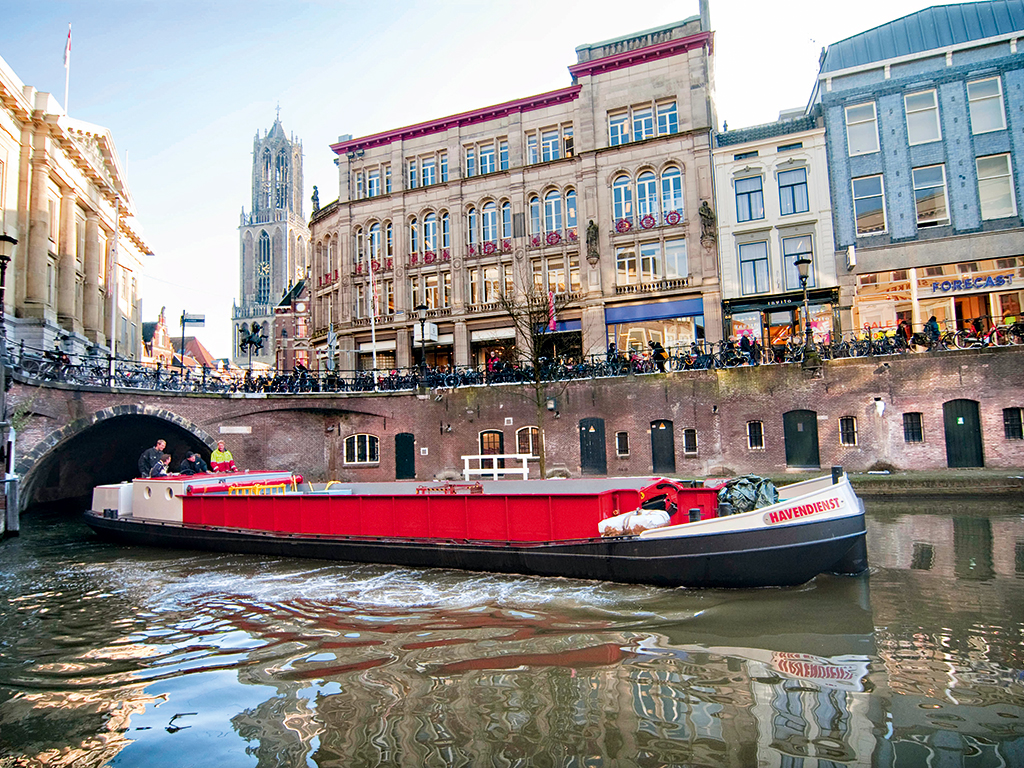Utrecht’s competitive edge is taking its economy to new heights
Thanks to a young, talented workforce and a citywide scheme to create a sustainable society, Utrecht has recently been voted the most competitive region in Europe

The Oudegracht (or ‘old canal’) runs through the centre of Utrecht. It is just one of the landmarks in the innovative and historic city © Jurjen Drenth
Utrecht is a bastion of innovation, competitiveness and sustainability in a global climate that otherwise offers little in the way of economic opportunity. “Utrecht is at the heart of the future economy,” says Mirjam de Rijk, Deputy Mayor of Utrecht, “engaging in the grand social challenges of our time.”
This sentiment is echoed by the European Commission; Utrecht was ranked first of 262 participants in 2013’s EU Regional Competitiveness Index. “Globally renowned knowledge institutions, an exceptionally well-educated workforce, centrally located in the heart of the Netherlands, excellent business locations: these are Utrecht’s main economic strengths,” read a recent report co-produced by the Municipality and Province of Utrecht, in collaboration with the Economic Board of Utrecht (EBU).
Educated population
43%
have a higher professional education or degree
91%
speak at least one foreign language
77%
speak at least two foreign languages
The triple helix
The success of Utrecht is due not to any one factor, but rather, an ability on the part of its people to unite a number of strengths and work towards one common goal. This collaborative approach is best characterised by the EBU, whose job it is to foster relationships between business communities, government organisations and knowledge institutions – otherwise dubbed ‘the triple helix’ – to strengthen the regional economy and spark sustainable improvements to people’s lives.
Comprising 21 board members, each with roots in the region, the EBU believes economic value is best achieved through cross-sector relationships and sees social challenges as market opportunities. By focusing on the three themes of healthy living, the green economy and service innovation the EBU has established a platform by which cross-industry solutions, whether they are economic or social, can be arrived upon.
Last year was the EBU’s first in operation, but the organisation still managed to complete 11 initiatives, with an estimated impact of €50m and 500 new jobs. “We challenge the entrepreneurial spirit, be it in business, in research or in government,” says Henk Broeders, Chairman of the EBU. “We create an environment for excellent research and business, and stimulate the application of new concepts in our business and personal life.”
A competitive workforce
One key factor underpinning Utrecht’s growth is the composition of its workforce: 43 percent come equipped with a higher professional education or degree, which equates to the highest-educated workforce in the country. 91 percent of the city’s population speaks at least one foreign language, and 77 percent speak at least two; this, combined with the city’s central location, ensures there is a seemingly limitless pool of talent available for employers to pick from.
This, along with numerous world-class universities and research institutes, ensures the plentiful supply of a young, though no less talented, workforce, which in turn lends itself to a vast ecosystem of innovation. Utrecht has what De Rijk describes as “a flourishing knowledge economy”, due to its hosting the Netherlands’ largest and best university. This is a wellspring of skilled labourers for now and the foreseeable future.
In August 2011, the ING Economic Department named Utrecht the most innovative province of the Netherlands, and the city’s many achievements in this space have continued. “Utrecht is the ideal economic region in which to establish your business,” says de Rijk. “It offers companies a wide range of high-quality and highly technical business and office accommodation. A large number of reputable, innovative and creative companies in the ICT, commercial and financial services sectors have already selected Utrecht as their headquarters.”

A patchwork of intensive business services (financial, engineering and business consultancy), life sciences and healthcare, and creative industries form the bedrock of Utrecht’s success: together, they constitute nearly half the regional economy. The three fields combined have a strong track record of expansion and innovation, averaging three percent annual growth.
Commitment to sustainability
Aside from Utrecht’s sound business credentials and proven ability to host all manner of industries, the city has a steadfast commitment to matters of sustainability. The Utrecht Energy action plan is a citywide programme centred on the region’s three most important themes: living, working and mobility. For each theme there exists a number of campaigns to leverage sustainable energy opportunities wherever they may be and boost the prospects of those within the city limits.
“Wherever possible,” says de Rijk, “these activities are developed in cooperation with parties in the city based on the conviction that the start-up phase is not only a time for laying the basis for sound cooperation, but above all offers space to apply new innovative ideas and initiatives.
“It is precisely these innovative insights that literally and figuratively generate ‘New Energy’. Utrecht focuses on collaboration and innovation from the bottom up, at project level, on the basis of shared concerns, awareness, interest, support and action. This approach was deliberately chosen because it fits in with the city’s mentality and key values.”
By-and-large, the city’s climate policy consists of two parts: mitigation and adaptation. Whereas mitigation places a heavy emphasis on ways to reduce CO2 emissions, adaptation largely focuses on counteracting the effects of climate change. This strategy extends to all manner of approaches, whether they are energy saving, tapping sustainable sources or simply using fossil fuels more efficiently.

© Robert Oosterbroek
One of the areas in which Utrecht has made extraordinary progress is waste management – an area that many Dutch cities are generally lagging behind in. As opposed to the average of 10-15 percent, Utrecht manages 50 percent of its waste separation, and aims to reach 65 percent in the near future. Regardless of what remains a relatively efficient rate of separation, Utrecht is striving to take recycling to an entirely new level with a framework entitled ‘Back to the City’.
“We aim to re-use the raw materials obtained from our city’s waste in the city-limits,” says de Rijk. “We aim not only to use these new materials for the production of energy, but also for the construction of our city. At the same time, our plan is to rethink the waste management production chain and reduce CO2 emission in the process. We believe a balanced production system of raw materials derived from waste is (financially) manageable at district level and have started negotiations with district government and institutions to take the necessary steps.”
The city’s waste management scheme, however, constitutes but a slither of Utrecht’s wider plans to instil an ethos of sustainability and innovation in the region. The way in which the city is managed, as well as the opportunities it offers to prospective businesses and inhabitants alike, certainly merits the title of Europe’s most competitive region.
For further information contact citymarketing@utrecht.nl













